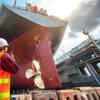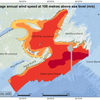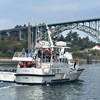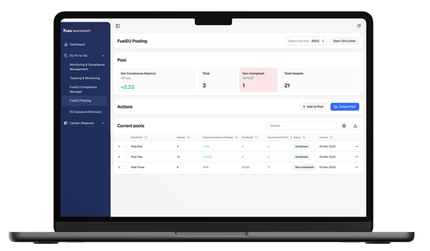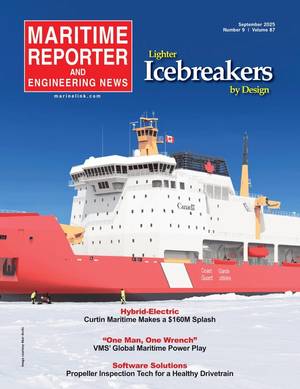U.S. Requires Nontank Vessel Response Plans
By Dennis Bryant, Senior Counsel, Holland & Knight LLP
The U.S. Coast Guard recently issued interim guidance for the development and review of oil spill response plans for nontank vessels. Since 1993, tank vessels have carried oil spill response plans. A recent legislative change will soon mandate similar response plans for most other ships. The problem is that the legislation requires nontank vessels to have the response plans sooner than the Coast Guard can promulgate regulations in accordance with standard procedures. Thus, the agency is unofficially advising stakeholders on how to comply with the legislation. Stakeholders will ignore the unofficial advice at their peril. The legislation has real teeth. Nontank vessels that have not prepared and submitted oil spill response plans prior to August 9, 2005 will not be allowed to operate on U.S. waters.
For this purpose, a nontank vessel is a self-propelled vessel of 400 gross tons or greater, other than a tank vessel, that carries oil of any kind as fuel for main propulsion and that is either a vessel of the United States or a foreign vessel that operates on the navigable waters of the United States (internal waters and the 3-nm wide territorial sea). Note that gross tonnage is measured in accordance with the International Tonnage Convention (ITC).
In accordance with the Coast Guard and Maritime Transportation Act of 2004 (Pub.L. 108-293), a nontank vessel of 400 gross tons or greater (as defined by the Act) must submit to the U.S. Coast Guard for approval a response plan that:
(1) is consistent with requirements of the National Contingency Plan and applicable Area Contingency Plans;
(2) identifies the qualified individual (QI) having authority to implement removal actions and require immediate communications between the QI and appropriate federal officials and response personnel;
(3) identifies and ensures by contract or other approved means the availability of private personnel and equipment necessary to remove to the maximum extent practicable a worse case discharge (Vessels of the United States that do not operate in the U.S. navigable waters or EEZ are not required to identify and have available response resources to respond to spills.);
(4) describes the training, equipment testing, periodic unannounced drills, and response actions by crewmembers;
(5) will be updated periodically; and
(6) will be resubmitted for approval of each significant change.
(7) The Coast Guard intends to issue a two-year authorization letter allowing the nontank vessel to operate without an approved response plan if the plan submitted meets the above detailed requirements and is accompanied by a certification by the owner or operator that the availability of response personnel and resources has been ensured by contract or other approved means. In the event that the Coast Guard lacks sufficient time to determine whether the submitted plan meets the above detailed requirements, the agency may issue a short-term interim authorization letter for nontank vessels where the submitted plan appears to meet the requirements and is accompanied by the certification. This interim authorization letter will be valid until the review process has been completed. As the Coast Guard expects that it will take at least one month to conduct an initial review of submitted plans just to determine whether the requirements appear to have been met, owners and operators are strongly encouraged to submit their nontank vessel response plans no later than July 9, 2005. The plans should be submitted to:
Commandant (G-MOR-2) U.S. Coast Guard 2100 Second Street, SW Washington, DC 20593-0001 Attn: VRP Programs
The nontank vessel oil spill response plans will closely resemble those required for tank vessels. There are some differences, though. For a small vessel (fuel capacity of less than 250 barrels), the plan need only address response to the vessel’s average most probable discharge (one percent of the fuel capacity) and salvage resources. For a vessel with a fuel capacity of 250 barrels or more, the plan must also address response to the vessel’s maximum most probable discharge (10% of the fuel capacity) and salvage and lightering resources. For a vessel with a fuel capacity of 2,500 barrels or more, the plan must address response up to the Tier I worst case discharge volume to the maximum extent practicable and salvage, firefighting, and lightering. Vessels carrying very heavy fuel oil (group V petroleum oil) as fuel will have additional planning requirements. A worse case discharge is a discharge in adverse weather conditions of a vessel’s entire fuel capacity.
The nontank vessel oil spill response plan, as well as the USCG approval letter, must be carried on the ship and made available to the Coast Guard upon request. The master and all crewmembers with responsibilities under the plan must be familiar with the plan. During Coast Guard boardings, crewmembers will be subject to questioning about their spill response duties.
Expenses related to this new requirement are not addressed in the guidance, but may be relatively substantial – particularly for small operators with minimal infrastructure. Arrangements will have to be made for the 24-hour availability of an individual or several individuals to serve as QI. Response contractors (generally referred to as oil spill removal organizations – OSROs) will have to be retained. Training and drills will have to be developed and implemented. Bear in mind, though, that following enactment of the Oil Pollution Act of 1990 (OPA 90), the volume of oil entering U.S. waters from tank vessels dropped dramatically. This informal guidance and the upcoming regulations are intended to achieve the same goal for nontank vessels.
It can be expected that spill management organizations will soon offer to provide QI service for owners and operators of nontank vessels, as well as provide generic oil spill response plans for these nontank vessels. OSROs, salvage companies, and others will soon offer to provide response, salvage, and lightering services for nontank vessels. Owners and operators should compare more than just price when considering which to retain. Check the company’s experience and its relationship with the U.S. Coast Guard. For instance, is the OSRO on the USCG list of certified OSROs and is it certified for the area in which your ship will be operating? How many oil spills and spill drills has the company attended? Does the generic plan offered really address your vessel and its situation?
One disconnect between the statute and the NVIC is that the statute directs the Coast Guard to consider response plan requirements that are mandated by any of the various states. The NVIC is silent on this issue. Several states, including California and Alaska, require certain nontank vessels to have oil spill response plans. For those nontank vessels already having response plans that are state-mandated, compliance with the new federal requirement should be relatively simple. Companies that own or operate both tank vessels and nontank vessels should check with the Coast Guard to determine whether it may be possible to incorporate the nontank vessels into the existing response plan regime.
This can eliminate the need for new QIs and OSROs. The ship-specific annex of the master plan will still have to be developed, though.
Training requirements will have to be carefully considered. Crews of the nontank vessels will need training similar to that currently provided crews of tank vessels. It can be assumed that contract QIs and OSROs will accept responsibility for their own training, but the owner or operator of the nontank vessel should inquire regarding that training program. Owners and operators of nontank vessels must also establish exercise or drill programs for their ships. Most exercise or drill requirements will be met by the contract QI and OSRO, but shore-based management of the owner or operator must participate in certain exercises. The nontank vessel will also be subject to unannounced drills. For those with long memories, the Oil Pollution Act of 1990 (OPA 90) included similar short deadlines for preparation and submittal of oil spill response plans for tank vessels. Then, as now, the regulatory process was insufficiently agile to allow for promulgation of the response plan regulations in a timely manner. Then, as now, the Coast Guard issued unofficial guidance on how to prepare and submit response plans. Tank vessel response plans submitted in accordance with that unofficial guidance were deemed by the Coast Guard as meeting the regulatory requirements when those regulations were eventually issued. Owners and operators of nontank vessels should follow the lead of the owners and operators of tank vessels and prepare and submit oil spill response plans consistent with the guidance contained in Navigation and Vessel Inspection Circular (NVIC) 01-05. The NVIC may be accessed at:
http://www.uscg.mil/hq/g-m/nvic/NVIC%2001-05.doc.pdf .
The NVIC contains the expected legal disclaimers that it does not impose legally binding requirements and does not commit the Coast Guard in its development of the response plan regulations. The Coast Guard said basically the same thing when it issued the tank vessel response plan NVIC in 1993. Response plans submitted under that NVIC were accepted by the Coast Guard as compliant with the regulations when those were eventually promulgated. We should expect the same resolution here.



